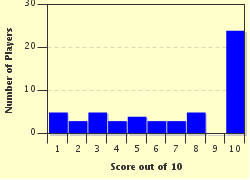Quiz Answer Key and Fun Facts
1. This city was the leading port of the Hanseatic League from the High Middle Ages till the 17th century.
2. This port was the chief naval base of Brandenburg-Prussia in the late 17th century and for much of the 18th century. It is in the extreme north-west of Germany, on the North Sea, well outside Brandenburg, and not far from the Dutch border.
3. Let's go eastwards. This large city in Saxony has been famous since the late Middle Ages for its trade fairs and for its university, founded in 1409.
4. In this city the Ruhr flows into the Rhine. The city has the largest inland port in Europe and is the centre of the German steel industry.
5. This town in Thuringia is particularly closely associated with Goethe, the Bauhaus and with the first republic in Germany.
6. This town in Hesse is particularly well known for its university, where Justus von Liebig established the first chemistry department in Germany.
7. This small town, in Bavaria since 1920, ought to be well known to anyone interested in the history of the British royal family.
8. The Romantic Road (Romantische Straße) extends from Würzburg in the north to Füssen in the south. Which small picturesque town can be found on this road, to the south of Rothenburg ob der Tauber?
9. This town on the Neckar, south of Stuttgart is well known for its university, founded in 1477.
10. This city lies on the shore of Germany's largest lake and shares its name.
Source: Author
bloomsby
This quiz was reviewed by FunTrivia editor
Pagiedamon before going online.
Any errors found in FunTrivia content are routinely corrected through our feedback system.
